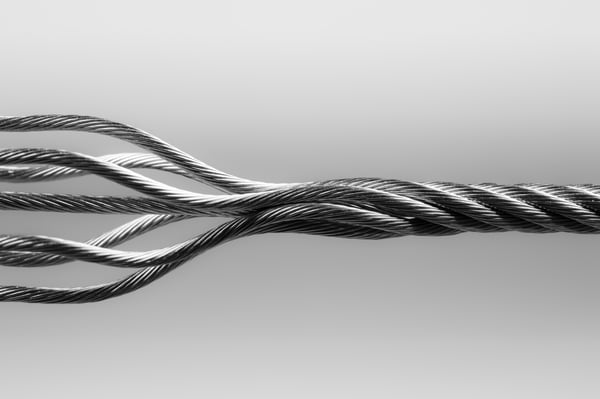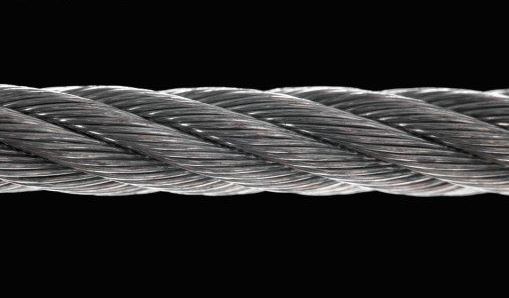When discussing the physical properties of wire rope, people often focus on the material, strength, and size specifications above all else. While these details are essential to understand how a product will survive in the field, they are not the only factors that drive cable performance. In fact, the lay direction of a cable has as much impact on its functionality as any of the other aforementioned characteristics, because it determines how much a cable will rotate, twist, and kink.
Lay direction describes the relationship between the way wires are wrapped into strands, and the way those strands are wrapped into wire ropes and cables. In general, there are two different configurations of lay directions: regular lay, and lang lay, which can rotate either to the left or to the right. 
Regular lay:
In a regular lay cable, the wires and strands are laid opposite to each other. In other words, all of the wires are laid in one direction as they are made into strands, and those strands are then laid in the opposite direction of the wires as they are combined into cable. When looking along a length of regular lay cable, the wires will appear to run parallel and straight the entire way. You can tell a cable is right regular lay because the strands will all flow to the right, or clockwise direction, compared to a regular left lay cable which flows the strands in a leftward, counterclockwise direction.

Lang lay:
In a lang lay configuration, the wires and strands are laid in the same direction. If all the wires are laid to the right as they are made into strands, then those strands will also be laid to the right as they are combined into cable. The same applies to a left lang lay configuration, where both the wires and strands would lay to the left. When looking along a length of lang lay cable, the wires will appear to angle across the rope, following the general flow of the strands. You can tell a cable is a right lang lay cable because both the wires and strands will flow rightward, in a clockwise direction. A left lang lay cable flows both wires and strands in a leftward, counterclockwise direction.
Functionality:
Cable is generally manufactured with a standard right regular lay because it is useful for a variety of different applications and complies with most equipment. In general, regular lay cable is more resistant to crushing forces than lang lay cable of an identical material and size, though lang lay cable is typically more flexible. Lang lay cables are usually more susceptible to pinching and kinking than regular lay, which means they are better suited to hoisting applications where the cable only moves along one axis.
In summary, the wires and strands in regular lay cable flow in opposite directions while the wires and strands in lang lay cable flow in the same direction. Lang lay cable is great for lifting, hoisting, and push-pull applications, while regular lay cable outperforms in situations where bends are required. To learn about our range of flexible, non-rotating, and non-flexible wire rope and aircraft cable, visit https://strandcore.com/products/aircraft-cable/ or contact us at https://strandcore.com/contact/.

